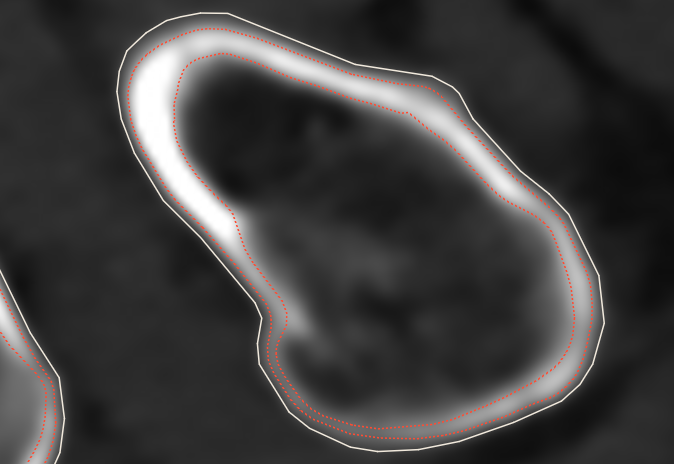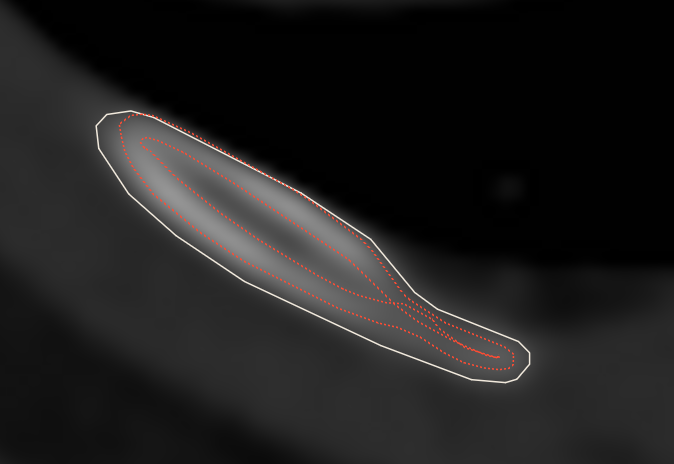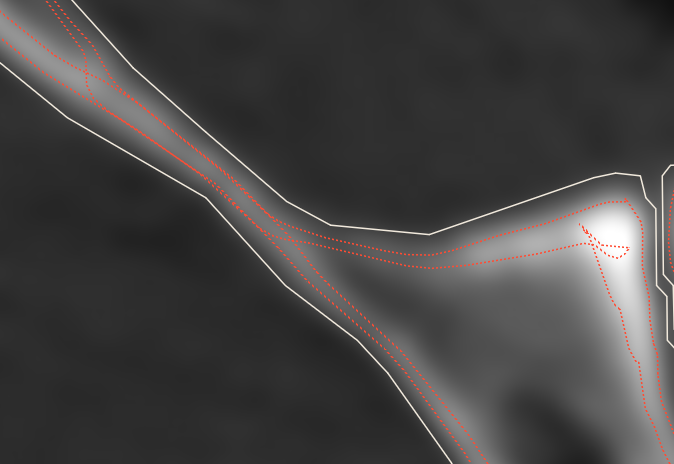Main > GMT_4YP_25_1
Dr Graham Treece, Department of Engineering
F-GMT11-1: When does bone have a cortical layer?
 |  |  |
| Accurately predicting the amount of bone cortex (shown in red: the outer, more dense layer) can be used to analyse bone quality | For some bones (this is a rib) there are parts which do not actually have an outer layer: the right-hand side is solid | The cortex can also disappear in the middle of a bone (left) or be badly defined at regions of high curvature (top right) |
Bone fracture is a major issue affecting millions of people annually, and we have been involved in research which has the potential to contribute significantly to both understanding and prevention of fracture. We already have a way of precisely measuring the location of the inner and outer bone surfaces (and hence the thickness of the denser layer surrounding the less dense bone in the middle). This technique is also being used to underpin models of bone used in mechanical analysis, for instance to see what happens to the skull during a head injury, and is being used by paleo-anthropologists who are interested in the properties of very old bones.
The technique works by making measurements across the whole skeletal surface: but the problem is that the bone doesn't have a cortex at all in some places, and in others the cortex is poorly defined. This issue can be partially addressed by varying the direction of measurement at each location (so there is no overlap in these directions over the inner cortical surface). But what should be done when there is no cortex at all, or it is not possible to find a measurement direction that works? In fact, how can we even rigourously define when bone has a cortical layer or not, given the complex shape of the bone and varying thickness of the cortex?
This project will start by considering how to define whether a cortical layer exists at all; then look at what to do in that situation and how to optimise measurement direction otherwise. Of equal importance would be considering how to reliably create the inner cortical surface, which is currently just a variable-offset version of the outer cortical surface. That creates the red lines in the figures above: which are clearly incorrect in some places. Offset surfaces are a classically hard problem in geometry, even without considering offsets which vary in size over the surface.
This is an algorithmic development / computational geometry / software project, so experience of writing software is essential, as is a good natural understanding of 3D geometry.
Click here for other medical imaging projects offered by Graham Treece.



